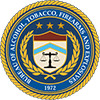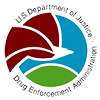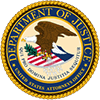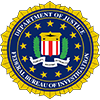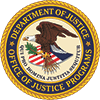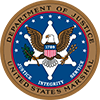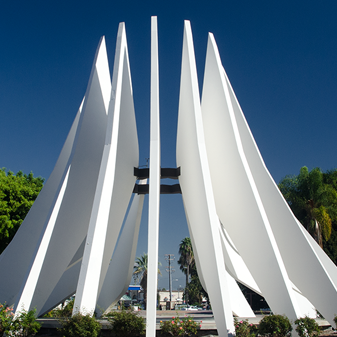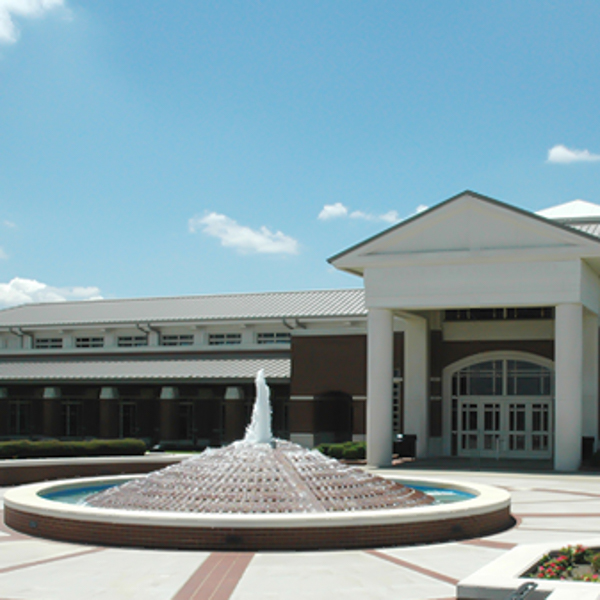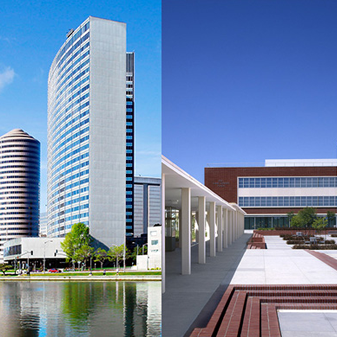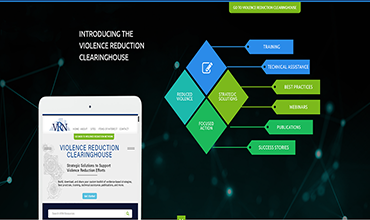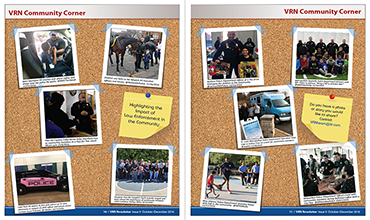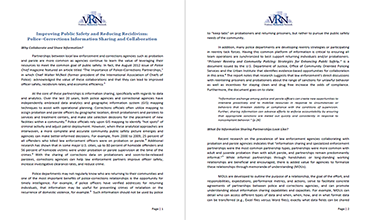Letter From The VRN Co-Directors
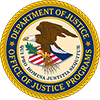
Hello, colleagues. It is our pleasure to share with you the progress and impact of the VRN program during 2016. VRN has a unique approach to address violent crime in some of our nation’s most at-risk cities. VRN leverages the expertise of DOJ law enforcement entities (including the Federal Bureau of Investigation, the Bureau of Alcohol, Tobacco, Firearms and Explosives [ATF], the U.S. Drug Enforcement Administration [DEA], and the U.S. Marshals Service [USMS]) and DOJ programmatic agencies (including the Office of Justice Programs [OJP], the Office of Community Oriented Policing Services [COPS Office], and the Office on Violence Against Women [OVW])to collaborate strategically with law enforcement and prosecutorial leadership in the partner cities. Through this process, DOJ joins forces to support our nation’s cities in the fight against violent crime and the effort to engage communities and keep officers safe.
VRN was established in 2014, so it is still a relatively new program. We all understand that it’s going to take time to see an immediate drop in violent crime rates. Nevertheless, VRN accepts the challenge and is proactively working on issues that directly impact public safety—such as building analytical capacity, improving investigations, targeting gang and gun violence, enhancing police-community relations, sharing information through peer learning, and enhancing technological capabilities. These are all tools that law enforcement tell us they need to better fight violent crime.
Through training, building relationships, strengthening policies, sharing best practices, and working with community members, DOJ supports the VRN cities’ local violent crime strategies. We have seen some promising progress this year. For example, in 2016, Milwaukee reported a 14 percent reduction in violent crime (compared to 2015) in its Center Street Corridor, which is a violent crime hot spot and an identified area of focus for Milwaukee’s VRN strategy.
In Arkansas, local and federal prosecutors and the ATF are working collaboratively with the Little Rock Police Department to prosecute violent gun crime cases that will remove violent offenders and gang members from the streets. In fact, in the first few months of 2016, 40 gun cases were transferred to the U.S. Attorney for federal prosecution. And in October 2016, another approximately 26 referrals were accepted for possible indictment by a grand jury. We learned that already in 2017, 41 VRN cases, involving violent offenders, have been accepted by the U.S. Attorney for federal gun and drug crime charges. That’s impressive!
As another example of the power of VRN collaboration, the USMS; the Newark, New Jersey, Police Department; the Essex County Prosecutor’s Office; the DEA; the FBI; and other law enforcement agencies conducted an operation targeting Newark’s most violent offenders—leading to the arrest of 240 fugitives, including 46 documented gang members and sex offenders and the seizures of guns, drugs, and money.
These are just a few examples of the progress and impact VRN is making to fight crime. By collaborating with local police and delivering resources they request, along with sharing information across the Network, we are making our cities better and safer places to live and work.
We hope that you take the time to visit the Violence Reduction Clearinghouse website, which was developed by the VRN team and introduced in September 2016. There, you can build, download, and share a custom toolkit of evidence-based strategies, best practices, training, technical assistance, and publications all sourced from some of the best available criminal justices resources.
We look forward to 2017 with renewed energy, drive, and commitment to support law enforcement and this program in the fight against violent crime.

Kristie Brackens
VRN Co-Director
Senior Policy Advisor
Bureau of Justice Assistance

Sarah Steffick
VRN Co-Director
Supervisory Special Agent
U.S. Drug Enforcement Administration
DOJ Partners
VRN Sites
This section details highlights of VRN activities and outcomes in the VRN sites for 2016. To view the site highlights organized by topic area, click here.
Sustainable Strategies: Phase 1 Sites
2016 In Review
The following includes highlights of VRN events in 2016.
- 2016
-
January: Podcast on Casualty Care and Rescue Tactics
Being prepared with the necessary skills and knowledge to provide immediate life-saving aid to oneself as well as to an injured individual has never been more critical for law enforcement. VRN hosted Chief David Flory (retired) in this podcast discussion on casualty care and rescue tactics, otherwise known as self-aid/buddy-aid. Listen to the podcast.
-
February: Webinar on Exploring Active Shooter Response and Training
This webinar provided law enforcement officials with an overview of the research and analysis of active shooting incidents from the last several years and shared information regarding training strategies and best practices for law enforcement response to an active shooter. It also provided information regarding current DOJ training and resources available through the FBI and the BJA VALOR Initiative and the Advanced Law Enforcement Rapid Response Training (ALERRT) Program. View the webinar.
-
March: Spring Summit
DOJ announced the expansion of VRN to Phase 3, welcoming three new cities: Milwaukee, Wisconsin; New Orleans, Louisiana; and St. Louis, Missouri. During the Summit, the new VRN cities received customized expert crime-fighting training on topics of their choosing.
-
March: Podcast on DOJ Community Relations Service (CRS)
CRS is DOJ's "Peacemaker" for community conflicts and tensions arising from differences of race, color, national origin, gender, gender identity, sexual orientation, religion, and disability. During this discussion, the speakers provided an overview of the CRS department and described how CRS works with local communities to resolve conflict and tension. Listen to the podcast.
-
April: Webinar on Recruiting a Diverse Police Department Through Digital Outreach
The webinar highlighted the importance of a diverse police force for building trust in the community and described how Chicago developed a 12-week digital outreach campaign to bolster minority recruitment. The speakers also shared lessons learned that will improve efforts in the future. View the webinar.
-
May: Sustainability Workshop
VRN leadership hosted the Phase 1 (2014) site leaders and team members for a workshop to discuss concrete changes that have taken place locally as a result of VRN and to begin to develop sustainability plans to continue crime-fighting progress achieved during the two-year VRN engagement.
-
June: Webinar on License Plate Reader Best Practices
This webinar provided law enforcement officials with an overview of the value of license plate readers (LPRs), including how to establish a program, the development of policies for LPR use, LPR successes, and the development of implementation plans. View the webinar.
-
July: Podcast on ATF’s NIBIN and eTrace
This podcast provided an overview of ATF’s National Integrated Ballistics Information Network (NIBIN) and the Electronic Tracing System (eTrace) networks and the services they provide to law enforcement. Listen to the podcast.
-
September: Fall Summit and Clearinghouse Launch
On September 26, DOJ announced the expansion of VRN to Jackson, Mississippi, and Nashville, Tennessee, to complete the Phase 3 cohort. VRN Phase 1 sites concluded formal engagement in the program and became the first class of “alumni” sites. The chiefs shared their lessons learned with the Phase 2 and 3 sites. During the summit, attended by over 300 participants, the VRN sites attended customized sessions that were focused on their individual needs. In addition, the entire Network heard from national experts on the topics of forensic-led policing, comprehensive strategies to reduce violence in hot spots, a bridge between law enforcement and community cultures, and meetLEO—a tool designed for building trust between law enforcement and communities. At the summit, DOJ officially launched the Violence Reduction Clearinghouse Website, an interactive resource library available to all law enforcement jurisdictions across the country. Through the Clearinghouse, users can explore training, technical assistance, publications, model programs and practices, and success stories to ultimately build a customized toolkit that meets individual violence reduction needs. Access the clearinghouse.
-
October: Webinar on Insight Policing
This webinar provided law enforcement officials with an overview of the Insight Policing training program available from George Mason University that teaches officers to apply insight policing skills to identify, understand, and defuse escalating conflict behavior and increase cooperation and trust among community members. In addition, the webinar provided an opportunity for local law enforcement agencies to share lessons learned and experiences with implementing Insight Policing strategies. View the webinar.
-
November: Resource Delivery Plans
Following the VRN Fall Summit, VRN Phase 2 and Phase 3 site representatives worked with VRN Strategic Site Liaisons and VRN Analysts to develop strategic resource delivery plans for VRN activities to be delivered in the coming months. Site leaders discussed violence reduction efforts planned for 2017 during a VRN Webinar in November.
Network Collaboration
VRN’s unique strategy capitalizes on the strengths of each DOJ partner agency to address a city’s identified needs with a coordinated response. VRN dedicates a site-specific team to support the partner agencies in navigating DOJ law enforcement and programmatic resources.
DOJ Partner Agencies
DOJ law enforcement partners (including the ATF, the FBI, the DEA, and the USMS) and programmatic agencies (including the Executive Office for United States Attorneys [EOUSA], the OJP, the OVW, and the COPS Office) offer the VRN sites expedited access to the full inventory of evidence-based violence reduction resources available from DOJ. Below are highlights of key resources offered by the VRN DOJ partner agencies.
ATF
- NIBIN
- Firearms Tracing
- Gun intelligence and prevention training
COPS Office
- Customized training related to community policing and engagement
- Community Policing Defined Training
DEA
- EPIC
- Gang Targeting, and Enforcement Coordination Center (TECC)
- Office of Investigative Technology: Emerging Technologies Training
- 360 Strategy
EOUSA
- Oversight, tracking, and prosecution of federal crimes
FBI
- Violent Crime Coordinator (VCC)
- DIVRT Initiative
- Cellular Analysis Survey Team (CAST)/Cell Site Simulator Assets
- HUMINT Development and Field Intelligence Groups (FIGs)
- Office of Public Affairs and Digital Billboards
OJP
- Through the BJA, OJJDP, and Office for Victims of Crime (OVC), OJP provides customized training and technical assistance (TTA) to the VRN sites upon request related to crime analysis, youth violence prevention, officer safety, gang violence prevention and intervention, technology assessments, victim services, witness intimidation, homicide investigations, and more.
OVW
- Customized training and technical assistance related to building capacity of criminal justice and victim service organizations to effectively and efficiently respond to violence against women, domestic violence, sexual assault, stalking, and dating violence.
- Domestic Violence Fatality Review Initiative
USMS
- Fugitive Task Forces
- Tactical Training
- Warrant Analysis and Response (W.A.R.)
DOJ Champions
VRN assigns each site a DOJ Law Enforcement Champion and a DOJ Program Champion, who serve as the points of contact for the site to effectively navigate access to federal law enforcement and programmatic resources and tools. Champions are assigned from ATF, DEA, FBI, USMS, BJA, OJJDP, OVC, COPS Office and OVW.
Strategic Site Liaison (SSL)
Each site is assigned a law enforcement professional to guide coordination of DOJ resources. The SSL assists the site to develop its unique VRN resource delivery plan. These individuals are highly regarded former police executives who have experienced many of the same issues facing the current VRN chief executives. For biographies of the VRN SSLs, click here.
Percentage Above National Violent Crime Rate in 2015 (As reported in the FBI Uniform Crime Report)
Camden, New Jersey
Chicago, Illinois
Compton, California
Detroit, Michigan
Flint, Michigan
Jackson, Mississippi
Little Rock, Arkansas
Milwaukee, Wisconsin
Nashville, Tennessee
New Orleans, Louisiana
Oakland, California
St. Louis, Missouri
West Memphis, Arkansas
Wilmington, Delaware
Quotes from the field

Chief Kenton Buckner
Little Rock, Arkansas, Police Department
The Little Rock Police Department is heading into our second year with VRN. We have seen measurable improvements within several areas of our agency. Specifically, they include but are not limited to the following: Training, Firearms Tracing, and Domestic Violence Response/Investigations Crime Analysis. The program has been as advertised. The Little Rock Police Department is very thankful to DOJ for the opportunity to participate with the initiative. We look forward to our continued success with our final year.

Chief Edward Flynn
Milwaukee, Wisconsin, Police Department
The VRN has been a powerful tool in reducing violence in Milwaukee. The close collaboration with the federal task forces has resulted in a 28 percent reduction in violent crime in targeted areas of our city in just one year.
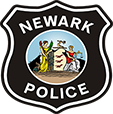
City of Newark, New Jersey
Office of Public Safety, Newark Police Division
VRN has assisted our policing efforts by supplementing us in areas of training and technical advice, making us more proficient in crime prevention, investigations, and the use of technology. The relationship we have developed with our VRN Team has fostered trust and a recommitment to the citizens that we serve. It has brought us back to the old adage “It takes a village.” We know we cannot achieve our objectives alone—we have found a supportive partner within the VRN and we are thankful. We look forward to better serving our community with the help of VRN.
Resource Spotlight
VRN Infrastructure
Assessments
As part of the VRN site launch process, VRN offers to conduct several comprehensive assessments of various areas within the police department and/or local partners related to technology, homicide investigations, crime analysis, victim services (OVC), and overall violence issues in the city. Through these assessments, subject-matter experts provide insights and recommendations for enhancements, future training and technical assistance, and focus areas to inform the site’s VRN Strategic Plan.
Clearinghouse
VRN has a website where every law enforcement agency can find, build, download, and share a custom toolkit of violence reduction evidence-based strategies, best practices, training, technical assistance, publications, and more—https://www.nationalpublicsafetypartnership.org/Clearinghouse
Grant Strategy
VRN sites receive focused technical assistance to further develop grant strategies and improve upon existing grant development efforts.
Peer Exchanges
VRN coordinates and facilitates delivery of peer learning opportunities to share various violence reduction best practices, ideas, and strategies across the country. Through 2016, 73 peer exchanges were completed.
Quarterly Newsletter and Weekly News
VRN publishes quarterly newsletters featuring activities, site highlights, and feature articles every quarter. In addition, every Friday, VRN distributes the Weekly Site News, a collection of news articles from the VRN sites along with upcoming opportunities, publications, and other resources.
Summit
VRN hosts an annual summit to convene participating VRN site leadership and DOJ officials to share best practices and meet with esteemed subject-matter experts on various violence reduction issues.
Technical Assistance
VRN delivers strategic technical assistance based on the needs of sites, such as training related to gang violence, ballistics processing, homicide investigations, technology, community surveys, victim services, and domestic violence. Through 2016, 1,850-plus hours of assistance have been delivered to the VRN sites.
Training
VRN provides training to partner sites on various topics, such as homicide investigations, officer safety, prosecution strategies, and crime analysis. Through 2016, 128 trainings were delivered to over 3,240 participants, representing nearly 40,000 hours among the VRN sites.
Website
The VRN Website was created as a public information hub with a private access side for sharing information and tracking activities occurring in the VRN sites. Please note, as of June 2017, the VRN Website was redirected to www.NationalPublicSafetyPartnership.org.
